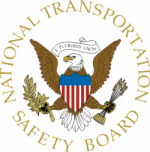Indications Are That Wheels Were Extended During Water
Landing
 Amphibious airplanes give their pilots a lot of versatility
when it comes to choosing a landing site. However, an August 1st
water landing resulted a fatal injury to an experienced floatplane
pilot, and the NTSB's preliminary report indicates the wheels may
have been extended during a water landing attempt in front of his
home on Moosehead Lake in Maine. A passenger on board the aircraft
survived the accident.
Amphibious airplanes give their pilots a lot of versatility
when it comes to choosing a landing site. However, an August 1st
water landing resulted a fatal injury to an experienced floatplane
pilot, and the NTSB's preliminary report indicates the wheels may
have been extended during a water landing attempt in front of his
home on Moosehead Lake in Maine. A passenger on board the aircraft
survived the accident.
NTSB Identification: ERA10LA390
14 CFR Part 91: General Aviation
Accident occurred Sunday, August 01, 2010 in Rockwood, ME
Aircraft: CESSNA A185F, registration: N369E
Injuries: 1 Fatal, 1 Uninjured.
This is preliminary information, subject to change, and may
contain errors. Any errors in this report will be corrected when
the final report has been completed.
On August 1, 2010 about 1115 eastern daylight time, a float
equipped Cessna A185F, N369E, was substantially damaged while
landing on Moosehead Lake near Rockwood, Maine. The airplane had
departed the Steven A. Bean Municipal Airport (8B0), Rangeley,
Maine. Visual meteorological conditions prevailed and no flight
plan had been filed. The certificated airline transport pilot was
fatally injured and the passenger was uninjured. The personal
flight was conducted under the provisions of Title 14 Code of
Federal Regulations Part 91.
According to a statement given by the passenger to the FAA
inspector, just prior to the airplane making contact with the water
the pilot made a verbal expression and immediately after making
contact with the water, the airplane went to the left and nosed
over. She also informed the FAA inspector that they departed a
paved surface at 8B0.
The accident airplane was examined by the FAA inspector that
traveled to the accident site. According to pictures provided by
the FAA the outboard section of the left wing beginning about
mid-span was bent in the positive direction approximately 15
degrees, the left float was buckled, and all four of the landing
gears were in the down or extended position. Once the airplane was
transported to the shoreline external power was applied to the
aircraft and the four green landing gear lights illuminated
indicating that the landing gear were extended and locked for
landing on hard surfaces.
The pilot, age 64, held an airline transport pilot certificate
with a rating for airplane multiengine land and type ratings for
the Douglas DC 3, Grumman 1159, HS-125, and N-265. He also held a
commercial pilot certificate, with ratings for airplane
single-engine land, airplane single-engine sea, airplane
multiengine sea, and rotorcraft-helicopter. His most recent FAA
second-class medical certificate was issued on May 13, 2010 and at
that time the pilot indicated 23,390 total hours of flight
experience.
The airplane was manufactured in 1980 and was issued an FAA
airworthiness certificate on February 6, 1980. The airplane's most
recent annual/100-hour inspection was accomplished on January 14,
2010, at the time of the inspection the airplane had accrued
5,610.1 total hours and had indicated a tachometer time of 685.3
hours. At the time of the inspection the pitot/static system was
also inspected.
The airplane was an all-metal, high-wing design with a Wipaire
amphibious landing gear system installed. It was equipped with a
Continental IO-520-D engine. According to aircraft logbook entries
and FAA records the amphibious landing gear system was installed on
the airplane on May 23, 2000. The airplane would be equipped with
either the amphibious floats or skis depending on the time of year
and the amphibious floats were re-installed on the airplane on June
23, 2010.
The 1056 recorded weather observation at the Greenville
Municipal Airport (3B1), Greenville, Maine located approximately 15
miles to the southeast of the accident location, included calm
wind, temperature 20 degrees C, dew point 11 degrees C; altimeter
30.09 inches of mercury.
 Aero-News: Quote of the Day (12.18.25)
Aero-News: Quote of the Day (12.18.25) Classic Aero-TV: Viking Twin Otter 400--Bringing the DHC-6 Back Into Production
Classic Aero-TV: Viking Twin Otter 400--Bringing the DHC-6 Back Into Production NTSB Final Report: Rans Employee Flying Club Rans S-6ES Coyote II
NTSB Final Report: Rans Employee Flying Club Rans S-6ES Coyote II ANN FAQ: Submit a News Story!
ANN FAQ: Submit a News Story! ANN's Daily Aero-Term (12.18.25): Braking Action Advisories
ANN's Daily Aero-Term (12.18.25): Braking Action Advisories



